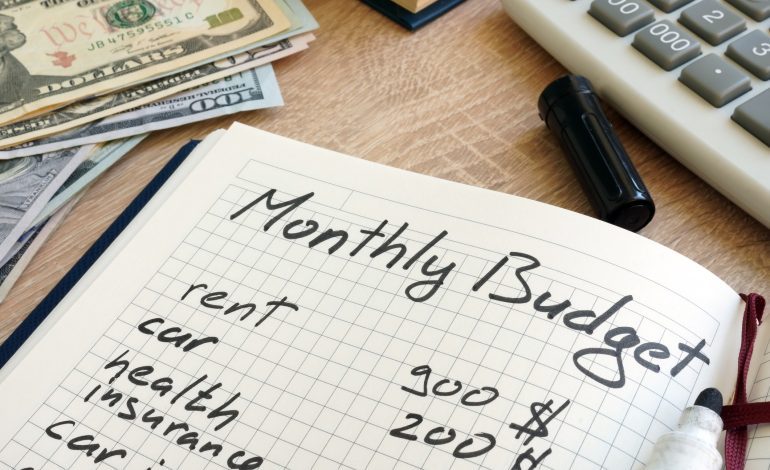Due to the high cost of both new and used cars, many buyers choose to finance their purchases. But in order to be approved for an auto loan with a respectable rate, you’ll normally need strong credit. If you have bad or no credit, it can be quite difficult to find an affordable loan with good terms.
However, if you want to buy a car without credit, you could have other choices that don’t involve using up all of your emergency funds. Here are some alternatives for financing as well as the procedures you should take while you comparison shop.
1. Understand Your Credit Situation
Before you begin shopping for a car, it’s helpful to understand your credit situation. This will give you insight into whether you’re likely to qualify for an auto loan from a bank, credit union, or car dealership.
To get a sense of where you stand, check your credit reports for free at AnnualCreditReport.com. Your credit reports contain information about your payment history, open and closed accounts, and recent credit usage. If your credit is limited, there may not be much information available, but it’s still useful to check.
Note that your credit score generally won’t appear on your credit reports. But you may be able to access a credit score through your credit card company or a reputable free credit score service. You need a certain amount of information on your credit reports to generate a score, so depending on your credit profile you may or may not have a credit score.
2. Prepare to Buy a Car With No Credit
As you prepare to buy a car, review your finances to determine the down payment amount you can afford. Certain lenders may require a larger down payment if you have no credit. Since they won’t have enough information to determine your creditworthiness, they could deem you a higher lending risk and thus ask for more money upfront.
It’s also smart to figure out the monthly payment you can comfortably afford. That way, you’ll have a number in mind when you shop. Having a predetermined limit will help you avoid overextending yourself financially, because salespeople will use the monthly payment as a way to entice you to buy a car.
3. Find the Right Car
The next step after figuring out your budget is finding the right car. To help narrow your options, think about the following questions:
- What’s your ideal price point? Use your credit, finances, and ideal down payment and monthly payment as guidance on pricing.
- Do you want to buy new or used? In general, used vehicles are less expensive.
- How many passengers will you have? This could help you determine whether you want a sedan or an SUV.
- Do you have a preferred make or model? Perhaps you had a past vehicle that was very reliable or you’re eyeing a car with high safety ratings. Use this information to guide your search.
- What about other costs? Fuel economy and maintenance costs are a big consideration when purchasing a new vehicle. Research these expenses before you buy.
4. Secure Financing
Securing financing for a new car can be tricky with no credit, but it’s not impossible. As with any other loan, it’s smart to shop around for a new auto loan. As you compare options, look at available terms, APRs, and borrower requirements.
While car dealerships offer loans, they don’t necessarily offer the best rates and terms. In some cases they can beat the rates you’ll find on your own, so they are worth exploring, but it’s always worth comparing dealership rates to what you can get directly from lenders.
Read Also: How do I Follow Financial Markets?
If you’ll be applying for multiple loans, aim to finish up all of your car loan shopping in a two-week period; this will help reduce the negative impact on your credit, because all of the credit inquiries will count as one for scoring purposes (some credit scoring models give you up to 45 days).
If you’re a member of a credit union, consider looking for loans there first. Ask if it offers any auto financing options for borrowers with no credit history, and if they do, consider pre-qualifying for an auto loan to determine the rates and terms you may receive. Note that your rate will likely be higher than if you had good credit.
You might also consider applying for an auto loan with a co-signer or co-borrower who has strong credit. Your auto lender will consider their credit profile in addition to yours during the loan application process, which could help you qualify for better rates and terms.
5. Negotiate the Best Deal
When purchasing a car from a dealership, it’s smart to negotiate the price. Doing so could save you a significant amount on the total cost. Here are some tips for negotiating the best possible deal:
- Research costs/trade-in value ahead of time: Once you have a vehicle in mind, research prices on sites like Kelley Blue Book and Edmunds; this will help you determine a fair trade-in value for your current car. Finally, look at dealerships in your area to compare price differences. Write down these values so you have them handy when you head to the dealership.
- Allot plenty of time to buy: Negotiating the price of a car can take time, so be prepared to spend a few hours at the dealership. If you’re in a hurry, you might be willing to accept a price that’s unreasonable to get out the door quickly. It’s best to go car shopping when you have the time to turn down a deal and look elsewhere.
- Go in with a number in mind: Chances are you probably have a price in mind based on your research, but it also makes sense to go with an ideal figure that will serve as a starting point for your negotiation (consider overall cost, down payments, and monthly payments).
- Be prepared to find a middle ground: The dealer may not necessarily accept your ideal price, but they’ll likely be willing to come down a bit on cost. Be prepared to find a middle ground, but stick to the limits set by your budget.
- Don’t forget extras: Ask about things like warranties, extra keys, features like remote starting, and possible rebates.
6. Finalize the Purchase
You may think you’re done negotiating once you settle on a price, but the dealership could try to upsell you on certain features before you finalize the purchase. Be prepared to say no to extra costs for things you likely don’t need, like extended warranties, anti-theft devices, and vehicle protection plans.
Once you’ve cleared these hurdles, you’ll likely be ready to sign your paperwork and finalize your vehicle purchase.
To buy a car with no credit history, you’ll likely need to bring the following to the dealership:
- Driver’s license
- Proof of insurance
- Financing information (if you have outside financing)
- Down payment (ask about accepted forms of payment)
- Proof of employment (recent pay stub, etc.)
- Existing vehicle registration (if you’re trading in your car)
- Details of the best auto loan offer you could get (not necessary, but may be helpful)


